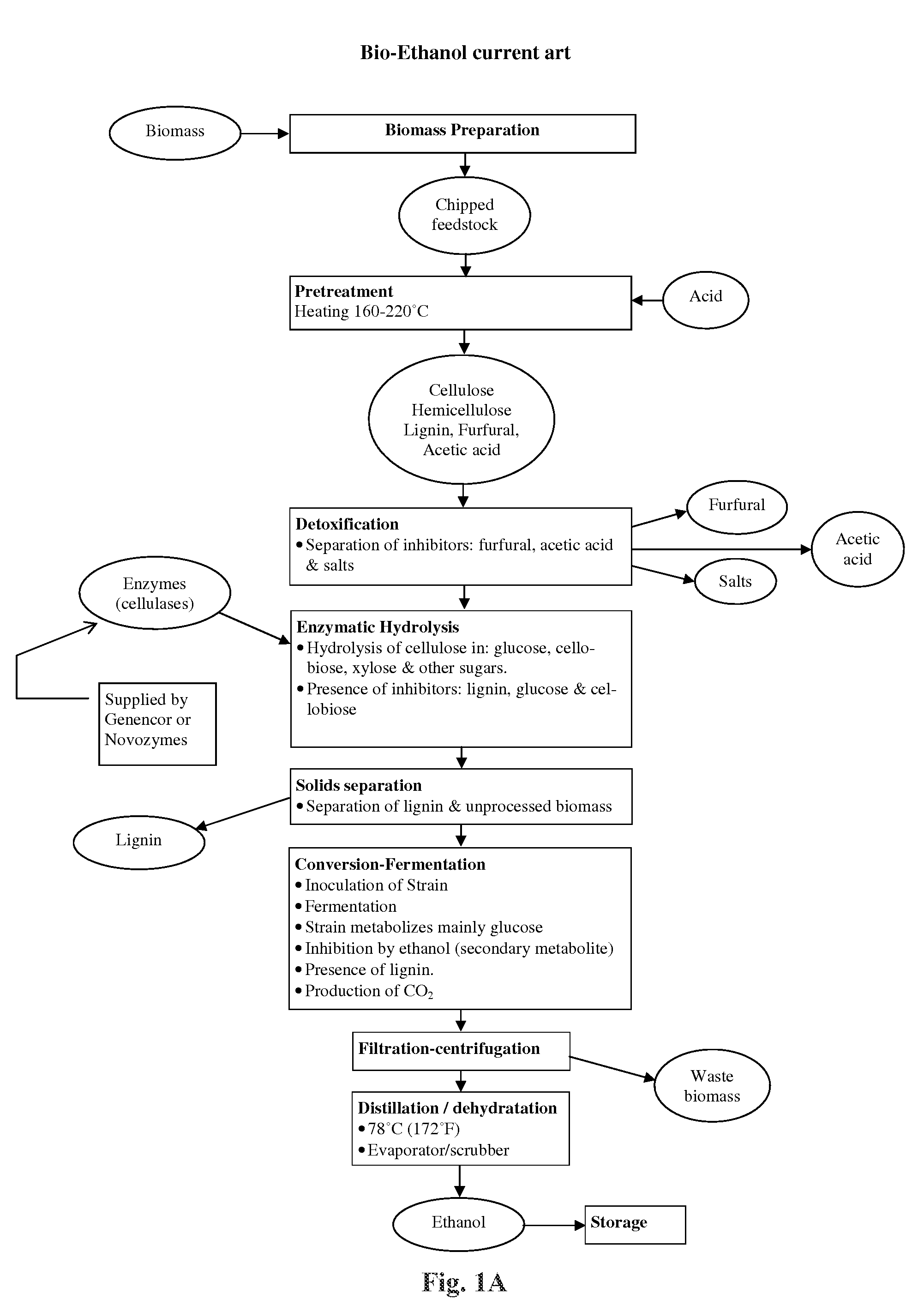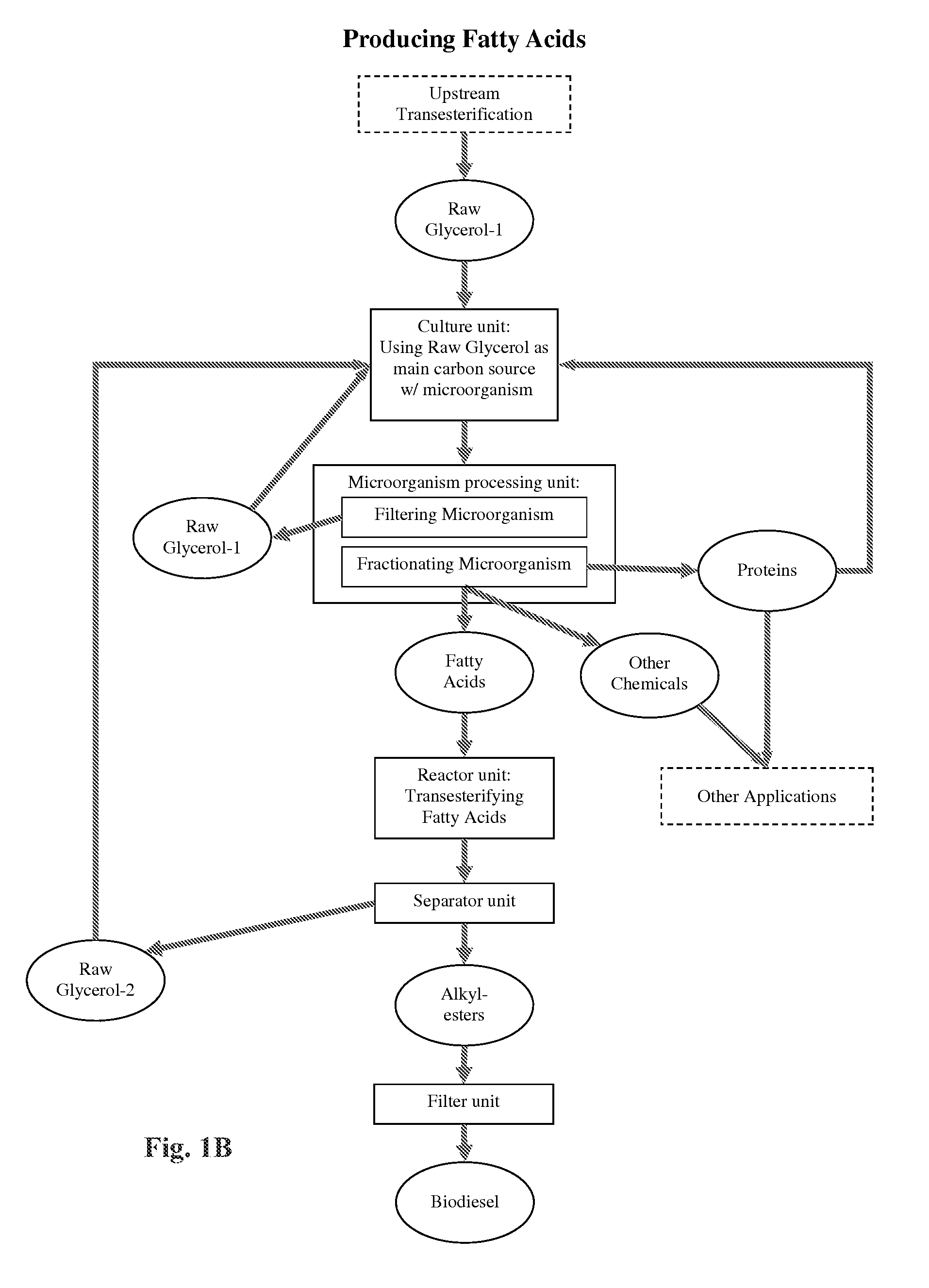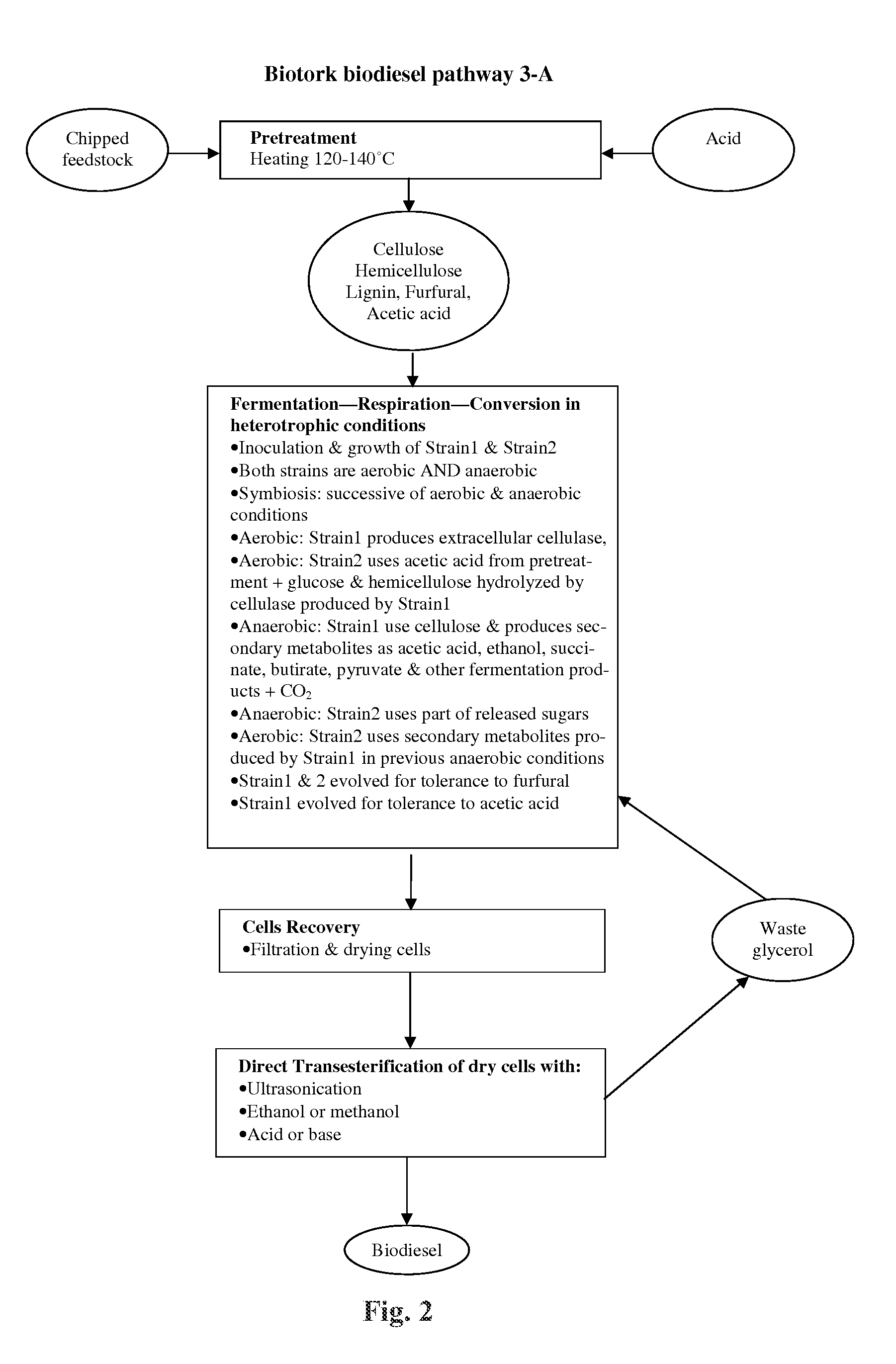Method of producing fatty acids for biofuel, biodiesel, and other valuable chemicals
a technology of biodiesel and fatty acids, which is applied in the direction of biofuels, microorganisms, microorganisms, etc., can solve the problems of cellulose a difficult starting material to process, more difficult to produce ethanol, and the eventual depletion of petroleum reserves of many people in the future, so as to eliminate the need for costly enzymes
- Summary
- Abstract
- Description
- Claims
- Application Information
AI Technical Summary
Benefits of technology
Problems solved by technology
Method used
Image
Examples
examples
[0275]One exemplified embodiment of the method of the present invention can be found in the chart in FIG. 4 and is discussed below.
[0276]In this example (A), a plant biomass material of chipped switchgrass was subjected to pretreatment by acid hydrolysis (sulfuric acid 0.5 to 2.0%) and heat treatment (120-200° C.). This pretreatment procedure produced a mixture for use in the above-discussed step (i). This mixture contained among other things cellulose, hemicellulose, lignin, furfural, and acetic acid.
[0277]In step (i), the mixture was inoculated with an evolutionarily modified microorganism strain of Fusarium oxysporum (designated EVG41025) and an evolutionarily modified algae strain of Chlorella protothecoides (designated EVG17020). The strains were grown under heterotrophic conditions, and under alternating aerobic and anerobic conditions. The conditions and strains are defined below.[0278]The modified Fusarium oxysporum strain (EVG41025) was evolved to metabolize pretreated swit...
PUM
| Property | Measurement | Unit |
|---|---|---|
| crystalline structure | aaaaa | aaaaa |
| physical | aaaaa | aaaaa |
| corrosive | aaaaa | aaaaa |
Abstract
Description
Claims
Application Information
 Login to View More
Login to View More - R&D
- Intellectual Property
- Life Sciences
- Materials
- Tech Scout
- Unparalleled Data Quality
- Higher Quality Content
- 60% Fewer Hallucinations
Browse by: Latest US Patents, China's latest patents, Technical Efficacy Thesaurus, Application Domain, Technology Topic, Popular Technical Reports.
© 2025 PatSnap. All rights reserved.Legal|Privacy policy|Modern Slavery Act Transparency Statement|Sitemap|About US| Contact US: help@patsnap.com



